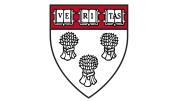AFTER THREE MONTHS of deliberation, a committee of Harvard Law School (HLS) professors, students, and alumni recommended abandoning a controversial shield linked to slavery as the school’s official symbol Friday.
HLS’s shield displays the crest of the slaveholding Royall family, whose fortune endowed the school’s first faculty chair. Dean Martha Minow created the committee to study the shield in November, after portraits of African-American law professors hanging in Wasserstein Hall were found defaced with strips of black tape. A student group calling for the shield’s removal, Royall Must Fall, began organizing early last fall. Their demands gained currency after a wave of protests of racism on university campuses, at Harvard and elsewhere, during the last academic year.
Reclaim Harvard Law School, a racial-justice group formed in the wake the defacement of the portraits in the fall, welcomed the recommendation to drop the shield on its Facebook page, but stressed that it would continue to call for larger reforms at HLS. Among the group's central and most ambitious demands are changes to the legal curriculum, which group members say does not adequately address the role of white supremacy in American legal history.
The report recommending dropping the shield discusses the Royall family’s connection to slavery and to HLS. Isaac Royall, Jr., who owned estates worked by slaves in the Caribbean and Massachusetts, left a bequest of land to Harvard upon his death in 1781, which was later sold to fund a law professorship. The shield was designed more than a century later, in 1936, but the committee did not find evidence that the Harvard Corporation knew the Royall family built its wealth on slave labor. Nonetheless, the report continues, “Few people in 1936 would have asked such questions…this reflects both the historical invisibility of African-Americans and the long-standing inability of modern Americans to acknowledge the centrality of slavery and its legacy in American history.”
“The Committee was unanimous in recognizing that modern institutions must acknowledge their past associations with slavery...For the Law School, this means reminding ourselves and others of the role of wealth derived from slave labor in its founding and using that knowledge as a spur to promote racial justice,” the report argues. “We cannot unsee what we now know, nor should we. The Law School would not today honor Isaac Royall and his bequest by taking his crest as its official symbol.”
“We had to dig really deeply into the connection among the law school, the shield, and Isaac Royall,” said Professor Bruce Mann, who chaired the committee. “This was not a matter of anachronistically judging Isaac Royall, a man of the 18th century, by the standards of the 21st century. Instead, we were asking whether an institution in the the 21st century should be represented by a man of the 18th century, whose only legacy was his money.”
The committee solicited opinions from 1,000 HLS students, alumni, and staff in making its decision. Mann said the diverse responses did not fall along age or political divisions. “This was not a political issue, and I think the responses demonstrate that abundantly.”
Minow endorsed the committee’s recommendation in a message to the Harvard Corportation, which will make a final decision about the shield. “I endorse the recommendation to retire the shield because its association with slavery does not represent the values and aspirations of the Harvard Law School and because it has become a source of division rather than commonality in our community,” she wrote in a separate e-mail to the HLS community. “Whatever the Corporation decides about the shield, at HLS we will be committed to addressing our history, and ongoing questions of injustice within our community and beyond.”
Despite its recommendation, the report takes a restrained approach to the Royall family’s history, disputing a claim made by some activists that the Royalls were responsible for the murder of 88 slaves involved in a revolt.
Two of the committee’s 12 members, including Professor Annette Gordon-Reed, one of those whose portrait was defaced in November, wrote a dissenting opinion that argued that abandoning the shield would distance HLS from a legacy of slavery that it should instead confront honestly. “Disaggregating the benefit achieved from the labor of the enslaved—the money accrued from the sale of Royall land—from the ‘burdens’ of being constantly reminded of from whence that money came, and of letting people outside the community know from whence it came, would be an abdication of our responsibility to the enslaved and a missed opportunity to educate,” the dissent argues.
Gordon-Reed distinguishes her position from that of critics who condemn student activists for demanding that colleges repudiate offensive language and symbols. “Certainly, the blanket condemnation—‘these kids today!’—is just a case of the well-known practice of the older generation looking at the youngsters and finding them wanting...Many complaints about offensive symbols are totally legitimate,” she wrote in an e-mail. But unlike symbols like the Nazi and Confederate flags, which were created and wielded as symbols of oppression, she believes the Royall family’s crest can be reimagined to remember Harvard’s link to slavery, and even to recognize the enslaved that created Isaac Royall's wealth.
Mann, himself a historian, along with other committee members, said abandoning the shield would not mean erasing Harvard’s connections to slavery. “Historians have a professional and moral imperative to confront the past unflailingly,” he said. “Retaining the shield would be an impediment to engaging that part of our past.” Many American institutions, he pointed out, have benefitted from wealth built on slavery, which they can interrogate without being captive to slavery’s symbols.
The committee’s recommendation follows the announcement last week that the College would drop the “House master” title—which House heads and some students felt alluded to slavery—in favor of “faculty dean.” Similar symbolic changes are taking place at peer universities. Princeton announced last fall that it would stop using “master” in its residential college system. Yale affiliates are debating doing the same, as well as renaming Calhoun College, a residential college named for white supremacist Yale alumnus John C. Calhoun.
But Mann stressed that the changes taking place at HLS are not merely symbolic. “If it’s simply dropping the symbol and not any more, then we have failed,” he said, pointing to Dean Minow’s efforts to draw students’ attention to the Royall family’s connection to Harvard. “We remind incoming students that lawyers must do more than merely know and follow the law. They must ensure that the law itself is just.”









